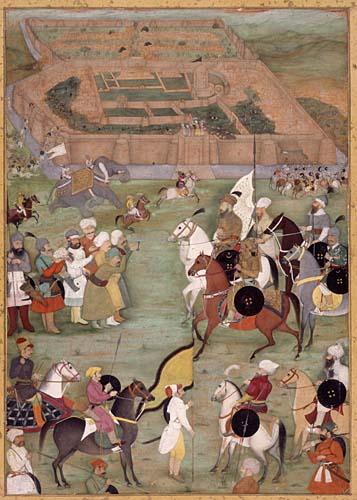
Try Amazon Fresh
Illustration from the Padshahnama
The Surrender of Kandahar (1638)
A larger image of The Surrender of Kandahar/Qandahar (1638), Padshahnama


This miniature depicts the surrender of the Persians (on the left) handing over the keys to the city to Kilij Khan whose haughty silhouette appears on the right, mounted on a white steed and wearing a black-plumed turban. The panoramic tableau - heightened by the plunging view over the city that creates an open-air atmosphere - is uncommon in Mughal painting. The painting is typical of the finest productions from the imperial workshop around 1640. The composition includes separate, symmetrical registers, skilfully rendered in a subdued vein. The upper background of this extremely well organized painting shows a citadel - probably Kandahar - treated in casually expert perspective. The surrender scene itself takes place in the foreground, and is inscribed in a virtual square, vertically subdivided into two parts.
The great Afghan fortress of Kandahar, commanding a strategic position on the road to India and a hub of trade, was bitterly fought over by Safavid Persia and the Mughal Empire in 1595 and 1622. In 1638, Shah Jahan again forced Kandahar to surrender but the city was definitively re-annexed by the Persians in 1653.